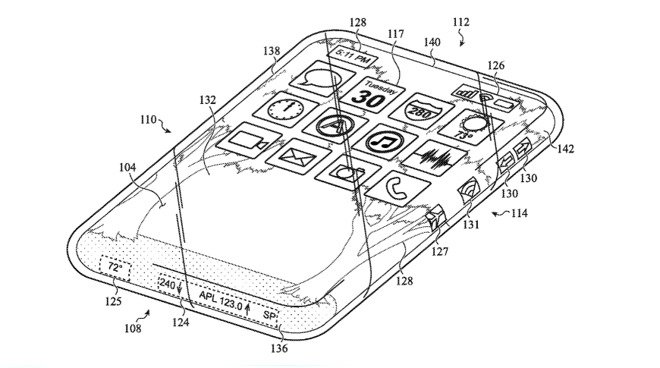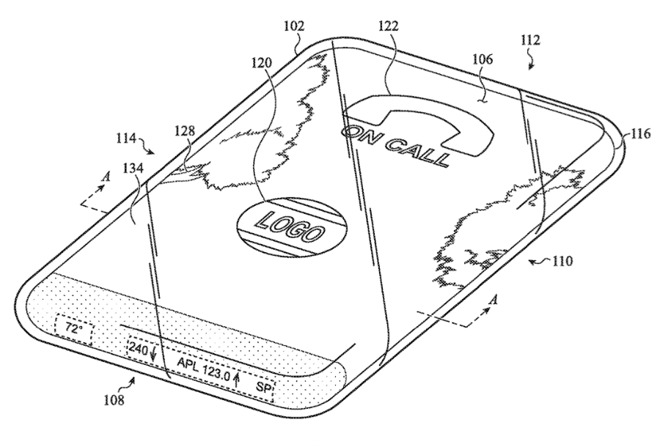New Apple patent shows us how an all-glass, all-screen iPhone would work


What you need to know
- A new Apple patent shows an all-glass iPhone.
- There would be displays on all sides.
- There would still be a main display, though.
With Motorola and Samsung leading the charge to a world of foldable phones, Apple looks like it might be considering a slightly different approach. According to a new patent spotted by Apple Insider, Apple has been working on an iPhone that has glass – and screens – an all sides.
The patent, called "Electronic Device with Glass Enclosure" and US Patent No 20200057525, includes diagrams of what this thing could look like. And it appears to potentially be amazing and a terrible idea at the same time.
Apple describes how a device could use multiple panes of class that are placed so as to appear as if they are one.
Conventionally, glass has been used in such devices to provide a transparent window over a touchscreen on a front of the device. Described herein, however, are electronic devices with enclosures that use glass to define multiple sides of the enclosure. For example, an enclosure that takes the general form of a rectangular prism may include a glass front, a glass back, and one or more glass sides. In some cases, substantially the entire enclosure (e.g., all exterior surfaces of the enclosure) is formed of glass, including the front, back, and all sides of the enclosure. In such cases, the enclosure may appear visually and tactilely seamless, such that the entire enclosure may appear to be formed from a single piece of glass (even though it may be formed from multiple separate pieces attached together).
An iPhone with multiple displays may appear confusing, but Apple's patent shows a way to make one of those surfaces the "main display" with apps, games, and other information appearing there. The other displays would be used for secondary information only.
The physical distinctions between the front, back, and side surfaces of the glass enclosures may indicate functional distinctions of the touchscreens, or display regions, corresponding to those surfaces. For example, while a front-facing touchscreen may present or define a main display region (e.g., for displaying application windows, games, grids of selectable icons), a side-facing touchscreen may display an auxiliary display region (e.g., for displaying affordances that control functions of the electronic device such as speaker volume, ring/silent, screen brightness, or the like). A back surface may display an additional auxiliary display region, which may include different content than the front or side surface(s).
This kind of thing is still obviously a few years away from being possible, especially at a realistic price point. It's also important to remember that Apple patents lots of things each year with few of those ideas eventually being used in products. But with foldable phones being so hot right now, what are the chances of Apple skipping them and going this route instead?
Ask me again in five years.
Master your iPhone in minutes
iMore offers spot-on advice and guidance from our team of experts, with decades of Apple device experience to lean on. Learn more with iMore!

Oliver Haslam has written about Apple and the wider technology business for more than a decade with bylines on How-To Geek, PC Mag, iDownloadBlog, and many more. He has also been published in print for Macworld, including cover stories. At iMore, Oliver is involved in daily news coverage and, not being short of opinions, has been known to 'explain' those thoughts in more detail, too. Having grown up using PCs and spending far too much money on graphics card and flashy RAM, Oliver switched to the Mac with a G5 iMac and hasn't looked back. Since then he's seen the growth of the smartphone world, backed by iPhone, and new product categories come and go. Current expertise includes iOS, macOS, streaming services, and pretty much anything that has a battery or plugs into a wall. Oliver also covers mobile gaming for iMore, with Apple Arcade a particular focus. He's been gaming since the Atari 2600 days and still struggles to comprehend the fact he can play console quality titles on his pocket computer.
